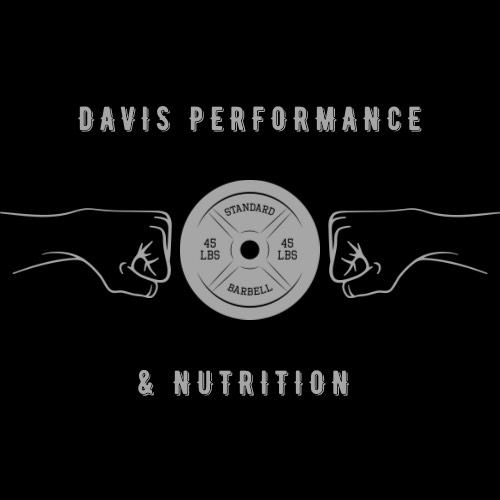Strength and Conditioning Blog of Blogs

Building a Better You - The Science Behind Strength Training for Men
“Dead last finish is greater than did not finish, which trumps did not start.” — Unknown
Introduction:
The pursuit of physical strength and muscle mass has always been a cornerstone of the male identity. Strength training not only shapes our physical appearance but also plays a crucial role in overall health and well-being. Understanding the science behind strength training can help men maximize their workouts, minimize injury risks, and achieve optimal results. From the importance of progressive overload to the benefits of compound exercises, building strength goes beyond just lifting weights. Join us as we dive deep into the science behind strength training and discover how it can help you become the best version of yourself.
Key Takeaways:
Strength training promotes muscle growth: Engaging in strength training exercises like weightlifting stimulates muscle protein synthesis, leading to muscle growth over time.
Consistency is key: To see significant improvements in strength and muscle mass, it is vital to stay consistent with your strength training regimen. Regular training sessions and progressive overload are crucial for long-term results.
Nutrition plays a vital role: Fueling your body with the right nutrients, especially protein, is vital for muscle recovery and growth. A well-balanced diet that supports your strength training goals is crucial to achieving optimal results.

The Anatomy of Strength
Key Muscle Groups for Men
Any successful strength training program for men should target key muscle groups to build a strong foundation. These include the quadriceps, hamstrings, glutes, chest, back, shoulders, and arms. By focusing on these muscle groups, men can enhance their strength, muscular endurance, and overall performance.
How Muscles Respond to Resistance
Muscle growth occurs when muscles are subjected to resistance that challenges them. To maximize muscle growth and strength, it's crucial to progressively overload the muscles by increasing the weight or resistance over time. This stimulates muscle fibers to adapt and grow stronger.

Developing a Strength Training Regimen
Setting Realistic Fitness Goals
Now, when commencing on a strength training program, it's crucial to set realistic fitness goals. Whether aiming to increase muscle mass, improve strength, or enhance overall fitness, establishing achievable targets can keep you motivated and focused.
Structured Workouts: Reps, Sets, and Variations
On tackling your strength training regimen, it's crucial to understand the importance of structured workouts comprising reps, sets, and variations. This framework ensures systematic progression and optimal muscle development, preventing plateaus and promoting continuous growth.
Strength training involves performing exercises with reps (the number of times an exercise is completed in a set), sets (a group of reps), and incorporating variations to target different muscle groups. The combination of reps, sets, and variations is tailored to individual fitness goals and can be adjusted to challenge muscles effectively.
Nutrition and Recovery
The Role of Diet in Building Muscle
Many men underestimate the importance of diet when it comes to building muscle. With the right nutrition, you can significantly enhance your strength training results. Protein is crucial for muscle repair and growth, while carbohydrates provide the energy needed for intense workouts. Healthy fats are also crucial for hormone production, which plays a key role in muscle building. Make sure to fuel your body with a balance of these macronutrients to support your training goals.
Rest and Recovery Techniques for Optimal Gains
Nutrition and recovery go hand in hand when it comes to optimizing muscle gains. Getting adequate rest is crucial for muscle recovery and growth. Overtraining can lead to injury and hinder your progress. Incorporate proper rest days into your training schedule, and consider techniques such as foam rolling, stretching, and getting enough sleep to support your body's recovery process.
Diet plays a crucial role in recovery as well. Consuming adequate nutrients post-workout can aid in muscle repair and replenish glycogen stores. Opt for foods rich in protein and carbohydrates to kickstart the recovery process and support your muscle-building efforts.
Staying Motivated and Overcoming Plateaus
Despite your best efforts, there may come a time in your strength training journey when you hit a wall. Plateaus are a common occurrence in any fitness regimen but can be incredibly frustrating. The key to overcoming these plateaus and staying motivated is to understand how to track your progress effectively and address any psychological barriers that may be impeding your performance.
Tracking Progress and Adjusting Your Routine
The ability to track your progress is crucial in determining the effectiveness of your strength training program. Keep a detailed record of your workouts, including sets, reps, and weights used. This information will allow you to see patterns in your training and make necessary adjustments to keep challenging your muscles.
Coping With Common Psychological Barriers
Routine can sometimes lead to feelings of boredom or lack of motivation in your workouts. It's important to recognize these psychological barriers and find ways to overcome them. For instance, try incorporating new exercises, changing up your routine, or setting specific, achievable goals to keep yourself engaged and motivated.
Advanced Strength Training Concepts
After mastering the basics of strength training, it's time to examine into more advanced concepts that can take your workout routine to the next level. Here are some key strategies to consider:
Periodization/Incorporating Functional Movements and Unilateral Training
Periodization and Its Benefits
Benefits: Periodization is a systematic approach to training that involves varying the intensity and volume of workouts over time. By cycling through different phases of training, such as hypertrophy, strength, and power, you can prevent plateaus and continue to make progress. This method also helps reduce the risk of overtraining and injuries by allowing for adequate rest and recovery periods.
Incorporating Functional Movements and Unilateral Training
The incorporation of functional movements and unilateral training is crucial for building a well-rounded and balanced physique. Functional movements mimic real-life activities and engage multiple muscle groups simultaneously, improving overall strength and coordination. Unilateral training, which involves working one side of the body at a time, can help correct muscle imbalances and enhance stability. Understanding how to incorporate these advanced techniques into your workout routine can take your strength training to the next level.
Safety and Injury Prevention
Proper Form and Technique
Keep in mind that practicing proper form and technique is crucial when it comes to strength training. Ensuring you execute each exercise correctly not only maximizes the effectiveness of your workout but also helps prevent injuries. Take the time to learn the proper form for each exercise and consider seeking guidance from a certified trainer if needed.
Recognizing and Addressing Training-Related Injuries
Injury prevention is a key aspect of any strength training regimen. Recognizing and addressing training-related injuries promptly can aid in a quicker recovery and prevent long-term setbacks. If you experience persistent pain, swelling, or any unusual discomfort during or after your workouts, it's crucial to listen to your body and seek medical attention if needed. Ignoring these warning signs can lead to more severe injuries.
Another critical factor in preventing injuries is to avoid overtraining. Pushing your body beyond its limits regularly can lead to fatigue, muscle imbalances, and increased risk of injury. Incorporating rest days into your training schedule and varying your exercises can help prevent overuse injuries and keep your body strong and healthy.
Technology and Strength Training
The Impact of Wearables and Apps
To optimize your strength training routine, incorporating technology can be beneficial. Wearable devices and fitness apps can track your workouts, monitor your heart rate, and provide real-time feedback on your form. Consistency and accountability are crucial in building strength, and these tools can help you stay on track.
How New Research Influences Training Methods
Methods in strength training are constantly evolving based on new research findings. Understanding the latest studies can help you tailor your workouts for maximum results. Experts recommend incorporating elements like progressive overload, varying rep ranges, and proper recovery protocols to achieve optimal muscle growth and strength gains.
Plus, learning about the latest advancements in training can help you avoid common pitfalls and injuries. Keeping up to date with evidence-based practices will not only enhance your performance but also prioritize your long-term health in the gym.
To wrap up
Ultimately, strength training is a powerful tool for men looking to improve their overall health and well-being. By understanding the science behind strength training, you can optimize your workouts for maximum results. Remember to focus on progressive overload, proper form, and adequate rest to see the best outcomes. Consistency and dedication are key to building a better you through strength training. So, whether you're a beginner or a seasoned lifter, keep educating yourself, setting goals, and pushing your limits to reach your full potential.
FAQ
Q: What is strength training?
A: Strength training is a form of physical exercise that utilizes resistance to improve muscle strength, endurance, and size.
Q: Why is strength training important for men?
A: Strength training is important for men as it can help increase muscle mass, boost metabolism, improve bone density, reduce body fat, and enhance overall physical performance.
Q: How often should men engage in strength training?
A: Men should engage in strength training at least 2-3 times per week, allowing for proper rest and recovery between sessions to maximize muscle growth and strength gains.
Q: What are some key principles of effective strength training for men?
A: Some key principles of effective strength training for men include progressive overload, proper form and technique, adequate rest and recovery, and a balanced training routine targeting different muscle groups.
Q: Are there any potential risks associated with strength training for men?
A: While strength training offers numerous benefits, men should be cautious of lifting heavy weights with improper form, overtraining, or neglecting rest periods, which can increase the risk of injuries. It is advisable to consult with a fitness professional before starting a new strength training program.



Facebook
LinkedIn
Instagram